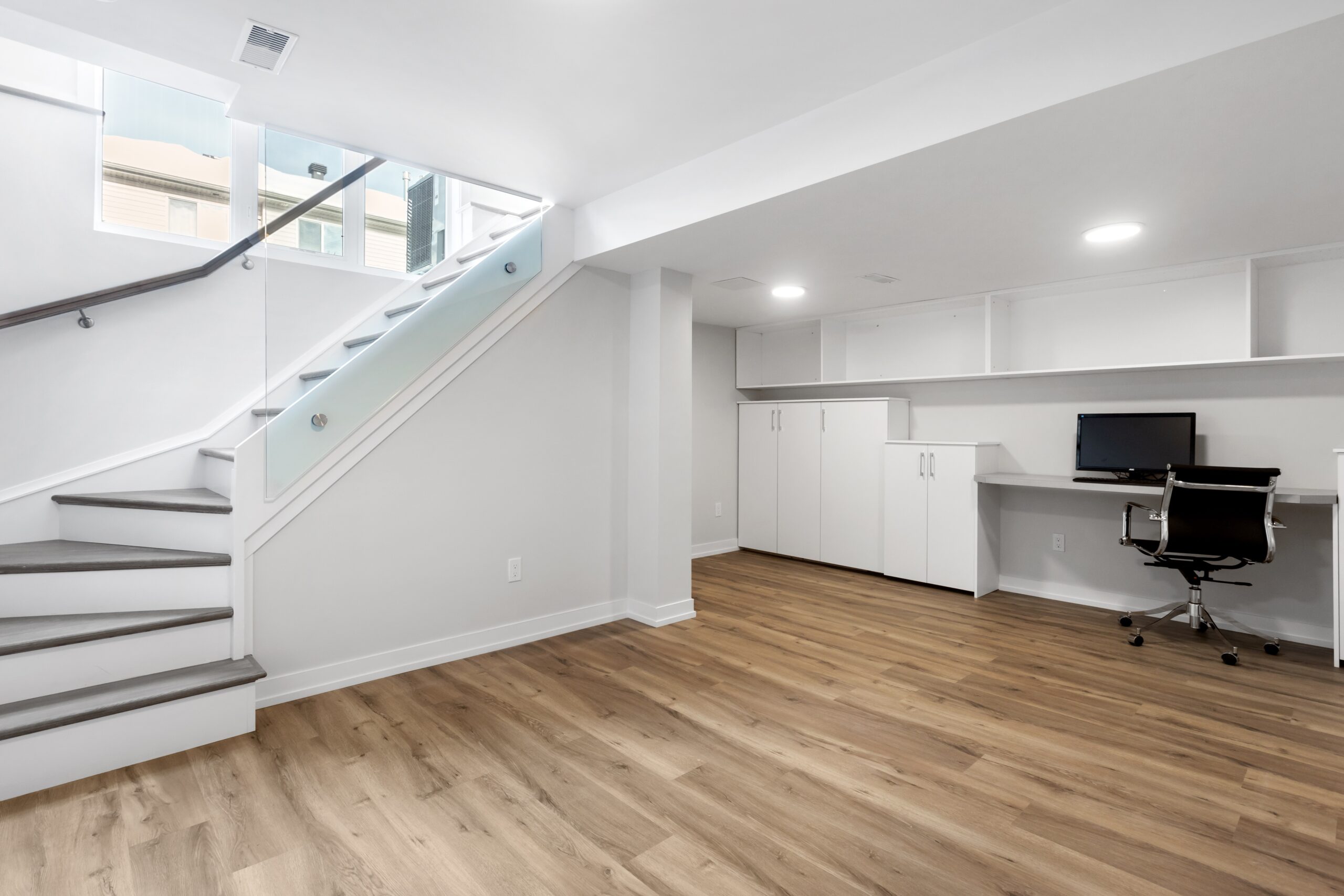Permitting 101
Part 1: Intro to Permits
It’s finally here. You’ve been daydreaming about it for years. You’ve done your homework, researched your team, gathered all the inspiration you could get your hands on, and you’re finally ready to put the wheels in motion on your big home remodel.
But wait! It isn’t quite as simple as “push button, get remodel” (if only!!). If you’re planning to do anything more than replace cabinets and put new paint on the walls, odds are good that your project is going to require some sort of permit from your local building department.
If there are clouds of questions floating around in your head – Who do you talk to? What permits do you need? How do you go about getting them? – then my friend, you’re in the right place.

Step 1. Who do you talk to?
The whole thing starts with finding out what jurisdiction you’re in, which building department will be issuing your permits, and most importantly, which permits are going to be required for your project.
Now, most jurisdictions will be very similar in what type of work requires a permit. The main thing to check for, then, is whether your home lies within any special zoning districts that will require additional drawings, details, considerations, and departmental reviews. This goes beyond your actual zoning district, which may have its own requirements, and could include anything – additional historical neighborhood overlays, flood plains, community service areas, public transit and traffic thoroughfare funnels, metro areas, wildlife habitats, and even future development plan districts. The point is, you won’t know what’s possible with your property until you find out who’s in charge and ask them.
Here in the Portland Metro area, we have a large number of jurisdictions, and it isn’t always clear exactly which one you’re in. Sometimes it’s whichever city or neighborhood you’re closest to (City of Portland, Beaverton, Hillsboro, Tualatin, Sherwood, Newberg, McMinnville…), and sometimes you’re one street over and fall into County jurisdiction (Washington County, Multnomah, Clackamas, Columbia…). Luckily, there’s a pretty easy way to tell who’s in charge.
How to discover what jurisdiction you’re in:
- Start big and go small. Google "(your county) GIS", enter your address in their search function, and search through the links. They’ll usually tell you what jurisdiction your address falls in. If you can't find the info or your address doesn't pop up, then check the GIS of the nearest city. If you still can’t find it: Google "(the nearest city) Building Permits", look through their website, and give their building department a call - they're usually quick, friendly, and willing to help.
- This is also a great place to get information on setbacks, any zoning overlays you may have to deal with, and the general requirements for development or remodeling in your area. It's a good first step to narrow down the potential scope and know ahead of time whether your ideas are feasible.
- Start a notebook or spreadsheet with the info you learn! This will help you in the planning and daydreaming stages to know what’s possible and what hoops you’ll have to jump through - as well as any special skills or experience your design and building team will need to have to help.
Who in the Building Department will you need to talk to for permits?
This will depend on where your house is and what exactly your project entails. When you first take your plans in for review, the friendly folks at the desk will let you know who will be taking an interest in what you want to do, and what information each discipline will need to see on your plans. They’ll put you in line to talk to each of them in turn (affectionately called The Gauntlet at the City of Portland building department, if that gives you any indication).
The urban areas tend to be harder to navigate, with more divisions wanting a piece of your remodel pie. You may have to deal with Planning, Transportation, Clean Water Services, Zoning, Life Safety, and more; the biggest thing to remember going in is that the earlier you can start the conversation, the easier it will be in the long run.

Step 2. What permits do you need?
There are several different types of permits, each with its own list of requirements for what information is needed to obtain them. The most common ones you’ll run into are the trade permits (electrical, plumbing, reroof, mechanical, zoning) and the building permit – which, depending on your jurisdiction, may include the trades or may be a different permit altogether.
Trade Permits
If your project is small (or if the trades are treated as separate from the building permit), the trade permits are fairly easy and simple to obtain. Often your General Contractor, or your subcontractors if you aren’t using a GC, will pull these for you as part of their service. It’s usually a simple over-the-counter process; the tradesperson will sketch out a rough floorplan, mark the changes they’re making, or sometimes just fill out a worksheet detailing the work they intend to do.
Here’s a quick overview for what work typically requires a trade permit (per the City of Portland Bureau of Development Services):
Mechanical Permit
- Install or change any part of a heating or cooling system which has duct work or must be vented into any kind of chimney or vent
- Install a wood stove or fireplace insert
- Install, alter or repair gas piping between the meter and an appliance (indoors and outdoors)
- Install a fuel oil tank
Electrical Permit
- Install, change or repair any hard-wired electrical system
- Run any additional wiring, put in an additional electrical outlet or light fixture, or change your fuse box to circuit breakers
- Install or alter low voltage systems such as security alarms, central vacuum systems, or low voltage lighting
- Add or replace electrical wall/baseboard heaters
Zoning Permit
- Build or install a garage or carport less than or equal to 200 square feet in area and less than 10 feet in height measured from the finished floor level to the top of the top plate to confirm the location on the site complies with zoning code requirements
- Create a new or enlarged parking area or driveway, or pave a previously graveled parking area
- Make any improvement required as a condition of your land use review approval which does not require a building permit
- Make any alteration to exterior development, including site work such as, constructing a patio or deck, clearing trees, or installing landscaping in any zone with restrictions on development
Plumbing Permit
- Repair, replace, relocate or add to the piping system within your home
- Install new plumbing fixtures such as toilets, sinks, showers, tubs, dishwashers, etc.
- Replace existing plumbing fixtures if the replacement involves concealed plumbing connections
- Install rain drains, cesspools, septic systems, drywells, sewer lines, water lines, backflow prevention assemblies for lawn sprinkler systems or cap a sewer
- Cap off fixtures that have been removed
Work NOT requiring a Building Permit
- Paint buildings
- Create a new or enlarged parking area or driveway, or pave a previously graveled parking area
- Install storm windows
- Install window awnings, not more than 54 inches deep and not in a design zone, that are supported by an exterior wall and do not project beyond the property line
- Install gutters and downspouts (a plumbing permit may still be required for stormwater disposal)
- Replace or repair siding
- Replace or repair roofing, including replacement of no more than 15% of the existing roof sheathing (a maximum of three layers of roofing is allowed, except in a wildfire hazard zone)
- Replace doors or windows if the existing openings are not widened or reduced in size
- Install swings and other play structures
- Replace accessible plumbing fixtures to make emergency plumbing repairs or to replace freeze-damaged or leaking concealed plumbing pipes that are no more than five feet in length
- Build a fence up to seven feet high (except in front setback areas – refer to the Fence Guide)
- Pave a walkway
- Build stairs, patio, or deck that is not more than 30 inches above grade
- Build a shed, garage or other non-habitable one-story detached accessory structure, provided that the floor area does not exceed 200 square feet and a wall height of 10 feet measured from the finished floor to the top of the top plate and not less than 3 feet to the property line
- Repave driveways where expansion is not proposed
- Build a patio, porch cover or carport not over 200 square feet and supported by an exterior building wall
- Replace interior wall, floor or ceiling covering (such as wallboard or sheet vinyl)
- Install shelving and cabinets
- Remove and reinstall a toilet when installing new floor covering
See PART 2 for work that DOES require a building permit > (coming soon!)

Step 3. How to go about getting them?
Anyone can pull the permits for your project – the homeowner, the contractor or subs, even your designer. The thing to remember is that the permit resides with whoever pulls it, so be sure whoever does provide that service will be there all the way through (i.e. if your builder leaves, you may have to pull a new permit).
What to Expect
If you choose to take your own plans in to the permit office, just be prepared! It doesn’t have to be scary. They’re usually super friendly folks, and most of them really do want you to be able to complete your project.
That being said though, some of the building officials are indeed code zombies who hate their lives and their jobs, and will follow the letter of the law down through the bullet points – rather than the spirit of the law, trusting that your builder knows what he’s doing and will do it correctly – making the process incredibly difficult, painful, and drawn out. If it’s early enough in the process, don’t be afraid to leave and bring your plans back in on a different day of the week if you don’t like what you hear from one official; sometimes you’ll get a different answer from a different person. Be sure to write down your conversation bullet points along with the date and the official’s name, so you can reference it later if needed to support your claims.
How to Make It Easier
- Check out the City of Portland's FIR program if you're in their jurisdiction. The City has made an effort to streamline and simplify their permitting process, employing former builders as inspectors to work with you on your remodel. It's life-changing, and will make your world so much better.
- I can't say this enough: start the conversation early. As soon as you have some ideas on paper, take the sketches in and have them tell you what issues you may run into and if you’re on the right track.
- Know when to apply for permits. Summertime is the hardest time of year to get nice faces and easy permits. Often the offices are so backlogged with applications that they’re looking for ANY excuse to turn you away at the door; they’re just trying to survive the day. If you’re hoping to build in the spring or summer, apply for permits in February or March. If you have an interior project that can be built over the winter, apply in October or November. It’s also best to get there first thing in the morning when the officials are fresh and happy. They’re people too. Coffee is important.
- Have a team who’s experienced in your jurisdiction and can get your plans as permit-ready as possible. Remember that it’s almost guaranteed that you’ll get questions and required revisions back during the process, it’s totally normal and your team can handle it. But you will want to make sure they’re there to support you during the process and know how to respond to those checksheets and do what’s needed all the way through permit approval.

There you have it!
Have you recently gone through permitting? Any helpful tips or horror stories? We’d love to hear how your experience was, so we can help others have the best chance of survival and permit approval!




